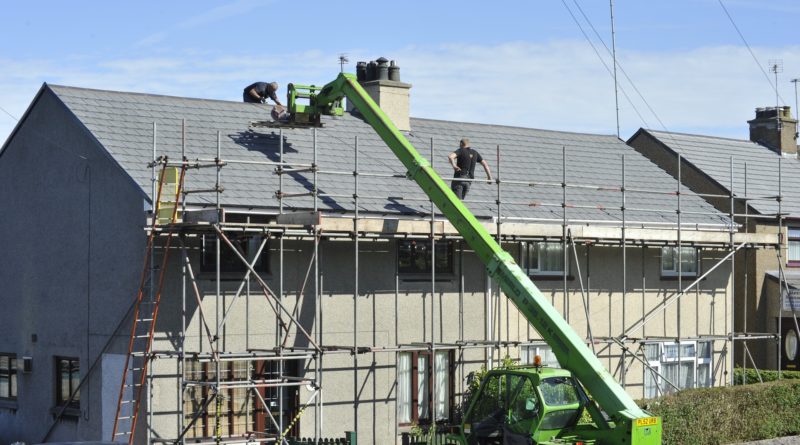Are You Ready to Invest in Property Development?
If you thought that successful property development was limited to high flying businessmen and millionaires, think again. Property development has become a pie which anyone can enjoy a slice of, as long as they have the right information at their fingertips.
Projections suggest that house prices in Australia could rise by as much as 18% in the next few years. While there’s no such thing as a ‘sure thing’ in the world of investment, many people consider property a pretty safe bet.
Choosing the Right Time for Property Development
Make sure you’ve done the research and the legwork before rushing in, suggests property expert Lochie Rankin. “As an amateur it can be very easy to underestimate the cost of the build and the time it will take to complete.” This includes ensuring you have completed all the necessary surveys, have the right planning permissions, as well as a realistic timeline and financial plan for your development. It’s likely you will need to consult with multiple experts, from solicitors and town planners, to engineers, builders and surveyors.
Strategies to Consider Before Starting Property Development
Before you begin, you need to think about which strategy is going to work for you. Consider your post-development plan.
Buy to Let is often used to build up a property portfolio, and developers then use the rental earnings from tenants to eventually take the place of their day job. It’s a great choice for playing the long game on your investment.
Another option is Buy to Sell. A riskier move, this involves good knowledge of the market, including patience and smart timing to make a good return. Senior economist Shane Garrett notes that you also need to prepare yourself to spend time and effort on renovations. “Australia’s home renovations market is a major strand of consumer spending and will be worth just under $30 billion this year.” In general, Buy to Sell works very well for developers looking to make a quick return on their capital.
Another strategy which developers can think about is splitting their property. If you are buying a large house, why not split the block into smaller flats and get a better return on your investment?
Bear in mind that banks and lenders will often only provide mortgages on properties with separate leasehold titles so the legal costs and investment of time should be factored into your plans.
How Can I Finance Property Development?
Property investor Steve Bolton from Platinum Property suggests you start out with no less than 100k capital to invest. “You can make investments in property with 100k or less, but it would be difficult to build a successful property portfolio of your own because recycling capital is a key principle to getting the best return on investment.”
Unsurprisingly, many developers need some help to fund this initial investment. In fact, the #1 reason SME’s need finance loans, is to put into property development. Finding the right construction business loan for you can be overwhelming, but it doesn’t need to be.
Whether you are looking to slowly build up your portfolio, or to invest in a large development opportunity, there are varied methods for obtaining finance.
While banks will often need to see a proven track record of successful developments, or require you to find ready agreed buyers or own the land outright, there are more flexible ways to obtain the cash influx you need to get started.
Bill Baker from UnsecuredBusinessLoans said “Some developers might choose to use short term finance like a business loan to cover the building and purchase costs, and then switch to a longer term commercial or residential mortgage later.”
The Benefits of Peer to Peer Lending
Thanks to new regulations which limit what banks can offer developers, Liam Brooke from Saving Stream comments “The days when banks dominated the property development lending market are well and truly finished – it’s now just as likely to be a debt fund, high net worth individual or a peer-to-peer lender that gets the spades in the ground.”
Due in large part to the recession, and with uncertainty on the horizon due to global events such as Brexit in the UK, banks are naturally more risk averse, and halving their investments into property development is a consequence of that. In contrast, peer to peer lenders can offer competitive terms, especially for small to medium-sized developers. With banks alluding to another cut in rates, investing in property through peer to peer lending for a promise of up to 10% is understandably tempting.
Just remember that peer to peer lending may not cover you under the Australian Government’s Financial Claim Scheme.
Should I Consider a Joint Venture?
Christopher Luck from Nabarro explains the win-win of a joint venture simply. “They allow parties to pool capital in a way that shares both the risk and the potential equity upside of property investments. The model is increasingly common where one party has local knowledge or expertise, whilst the other has equity to invest.” The benefits of a joint venture are obviously in large part financial, but also include having a partner to make decisions alongside.
If you choose to look into a joint venture, networking and timing are key. Once you’ve found a suitable partner, make sure you are both clear on your exit strategy, your regulatory considerations and your tax commitments.
Andrew Carnegie famously said “Ninety percent of all millionaires become so through owning real estate.” With a smart development strategy alongside the right financial support, could you be next?


